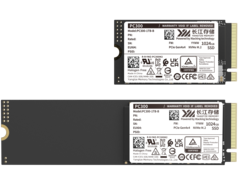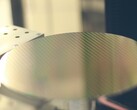Yangtze Memory Technologies Co. (YMTC) has remained on the U.S. Commerce Department’s Entity List since late 2022. Yet, the Wuhan-based maker is pressing ahead with an expansion that aims for roughly 150,000 wafer starts per month (WSPM) this year and 15 percent of global NAND supply by the end of 2026.
YMTC was already on course for about 130,000 WSPM by late 2024—around 8 percent of worldwide capacity—and has begun shipping 232-layer TLC parts (X4-9070) created by bonding two decks for a total of 294 layers. While most competitors are still trimming capital expenditure, the Chinese firm plans to grow bits faster than the industry’s projected 10–15 percent rise in 2025.
The product roadmap includes a 1 TB TLC device, a 3D QLC X4-6080 slated for later this year, and a 2 TB TLC X5-9080 with a 4.8 GT/s interface pencilled in for 2026. Future generations are expected to exceed 300 layers by bonding three decks, trading throughput for higher bits per wafer.
To reduce dependence on foreign equipment, YMTC plans to start a pilot line that relies exclusively on Chinese-made tools in the second half of 2025. Analysts believe a successful ramp could eventually double bit output and push market share beyond 15 percent, but caution that the facility is experimental, and volume production would take time.
TechInsights reports that YMTC’s latest “Xtacking 4.0” chips deliver performance on par with market leaders. Yet, the company had to scale back layer count because domestic process tools still struggle with yield. Persistent gaps—most notably in extreme-ultraviolet lithography, which remains out of China’s reach—mean sustained gains will hinge on closing the equipment and yield deficit even as local vendors such as AMEC, Naura, and Piotech narrow the gap.
Combined, YMTC’s capacity build-out, multi-deck NAND roadmap, and localization push illustrate how China’s semiconductor self-sufficiency drive is moving from policy to production. Whether these efforts translate into a lasting 15 percent share by 2026 will depend less on ambition than on the maturing of domestic fab tools and the consistency of production yields.
Source(s)
Digitimes (in English)













